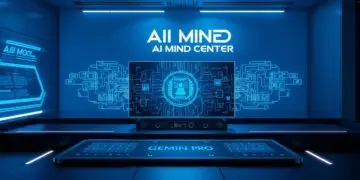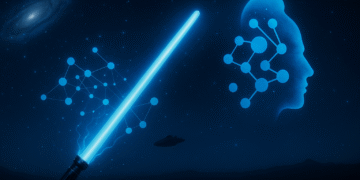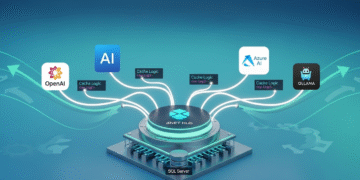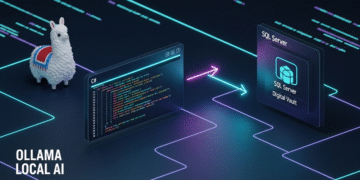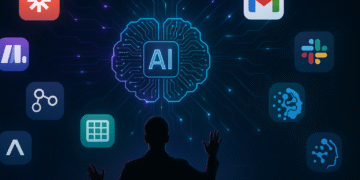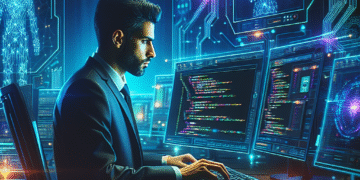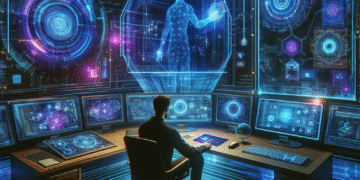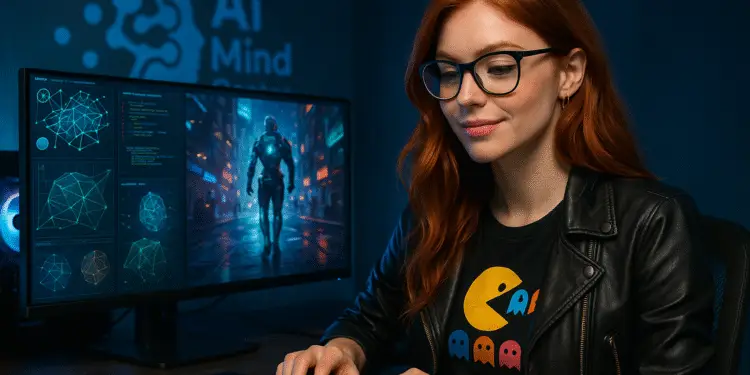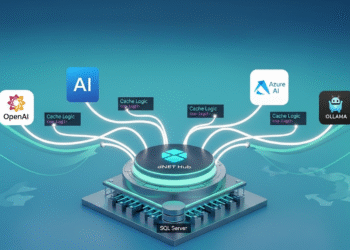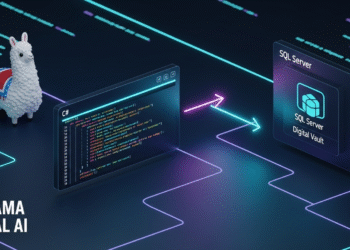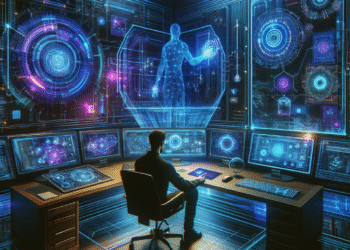Introduction
In the rapidly evolving landscape of game development, artificial intelligence (AI) has emerged as a powerful force, reshaping how games are conceived, created, and experienced. From generating stunning 3D models to powering lifelike non-player characters, AI tools are revolutionizing the industry by streamlining workflows, enhancing creativity, and enabling developers to push the boundaries of what’s possible in gaming.
This transformative technology has reduced production timelines, lowered barriers to entry, and opened new creative possibilities for developers of all sizes. Whether you’re an indie developer with limited resources or part of a major studio seeking to optimize your workflow, AI game development tools offer unprecedented opportunities to unlock your potential.
In this comprehensive guide, we’ll explore seven cutting-edge AI tools that are redefining game development in 2025, examining how they’re changing the industry and why they’re essential additions to any developer’s toolkit.
1. Hunyuan 3D 2.5: Revolutionizing 3D Model Creation
Hunyuan 3D 2.5, developed by Tencent, stands at the forefront of AI-powered 3D asset generation technology. This groundbreaking tool has transformed the 3D modeling process, allowing developers to create high-quality models from text prompts or 2D images with remarkable speed and accuracy.
At its core, Hunyuan 3D 2.5 features two primary components that power its impressive capabilities. The first is Hunyuan3D-DiT, a large-scale shape generation model that creates the geometric structure of 3D assets. The second is Hunyuan3D-Paint, a texture synthesis model that applies high-resolution, vibrant textures to generated shapes. This two-stage approach effectively decouples the challenges of shape and texture generation, providing flexibility for developers to texture either AI-generated or handcrafted meshes.
Key Features and Benefits:
- Text-to-3D Generation: Simply describe what you want, and Hunyuan 3D 2.5 will create a detailed 3D model based on your description.
- Image-to-3D Conversion: Upload reference images from multiple angles for more accurate 3D reconstruction.
- High-Resolution Textures: Generate vibrant, detailed textures that enhance the visual appeal of 3D assets.
- Wide Format Compatibility: Supports popular file formats like OBJ, FBX, STL, and GLTF, ensuring seamless integration with industry-standard software.
- Rapid Prototyping: Generate complex 3D assets in seconds rather than hours or days of manual modeling.
For game developers, Hunyuan 3D 2.5 represents a paradigm shift in asset creation. Independent studios with limited resources can now produce high-quality 3D content that previously would have required substantial time and specialized expertise. Larger studios can use the tool to rapidly prototype concepts, allowing artists to focus their talents on refinement and creative direction rather than time-consuming initial modeling.
Official Link: Hunyuan 3D 2.5
2. Promethean AI: Intelligent Environment Creation
Promethean AI has established itself as a revolutionary force in game environment creation, functioning as an AI braintrust for creative teams building virtual 3D worlds. Trusted by over 10,000 users, including PlayStation Studios, this sophisticated tool harnesses the power of artificial intelligence to automate repetitive tasks in environment design, freeing artists to focus on creative aspects of world-building.
The core philosophy behind Promethean AI is to “manufacture time” for development teams, handling mundane aspects of asset placement and environment population so that artists can concentrate on storytelling and aesthetic vision. This approach not only accelerates the creation process but also elevates the quality of the final product by allowing artists to dedicate more attention to creative decision-making.
Key Features and Benefits:
- Natural Language Environment Generation: Describe the environment you envision, and Promethean AI will generate detailed layouts based on your specifications.
- Intelligent Asset Suggestion: The AI recommends appropriate assets for different environments, ensuring consistency and realism.
- Rapid Prototyping: Create complex environments in minutes rather than days, allowing for faster iteration and experimentation.
- Studio Integration: Seamlessly works with leading game engines like Unreal Engine, Unity, and Blender.
- Style Learning: The AI adapts to your artistic preferences over time, creating environments that align with your unique vision.
Promethean AI is particularly valuable for level designers seeking to quickly populate game worlds with contextually appropriate objects and structures. The tool’s ability to understand spatial relationships and environmental context allows it to suggest logical asset placements, creating believable spaces that follow established design principles.
Official Link: Promethean AI
3. Ludo.ai: AI-Powered Game Design and Ideation
Ludo.ai serves as a comprehensive AI assistant for game research and design, dramatically increasing productivity by providing resources for designing chart-topping games all within a single platform. This innovative tool addresses one of the most challenging aspects of game development: the ideation process and ensuring market fit.
By leveraging advanced AI technologies, Ludo.ai helps developers generate innovative game concepts, analyze market trends, and optimize gameplay experiences. This makes it an invaluable resource for studios seeking to create commercially successful titles that resonate with target audiences.
Key Features and Benefits:
- AI-Powered Co-Writer: The Game Concept tool functions as an AI assistant that helps structure and generate text and images for game mechanics, story, characters, and more.
- 3D Asset Generation: Create and download 3D models in multiple formats (GLB, STL, PLY) using descriptive text prompts.
- Game Ideator: Generate fresh game concepts by inputting keywords, themes, or existing game titles.
- Market Analysis: Discover emerging trends, analyze top-performing games, and identify untapped market opportunities.
- Ludo Market Score: Receive detailed assessments of game concepts based on chart dominance, trend alignment, newcomer impact, and creative edge.
- Unity Code Generation: Create tailored C# scripts for game mechanics, characters, and UI elements based on game concepts.
Ludo.ai particularly excels at helping developers identify viable niches in the competitive gaming landscape. By analyzing current market trends and player preferences, the platform guides creators toward concepts with strong commercial potential, reducing the risk of developing games that fail to find an audience.
Official Link: Ludo.ai
4. modl:test: AI-Powered Game Testing and QA
Modl:test represents a significant advancement in game quality assurance, using AI bots to explore games, identify bugs, and report on performance issues. This cutting-edge tool addresses one of the most resource-intensive aspects of game development: thorough testing across varied scenarios and play styles.
By automating repetitive aspects of QA testing, modl:test allows development teams to focus on more complex and creative testing challenges. The tool’s AI bots operate continuously, providing comprehensive test coverage that would be impractical or impossible to achieve with human testers alone.
Key Features and Benefits:
- Automated Exploration: AI bots autonomously navigate game environments, interacting with all accessible elements to identify potential issues.
- Error Reporting: The system reports on performance issues, null reference exceptions, errors from the stack trace, and custom-defined issues.
- Parallel Testing: Run multiple tests simultaneously across different builds, dramatically accelerating the testing process.
- Movement Analysis: Examine overview maps of QA bot movements to identify accessible areas, problem spots, or geometry issues in both 2D and 3D games.
- Custom Issue Detection: Extend the system to report on game-specific events and issues.
For development teams, modl:test offers a significant competitive advantage by reducing the time and resources required for comprehensive QA. The continuous, automated testing enabled by the platform allows teams to identify and resolve issues earlier in the development cycle, resulting in higher-quality releases and fewer post-launch patches.
Official Link: modl:test
5. Inworld AI: Creating Lifelike NPCs and Characters
Inworld AI has emerged as a leading platform for creating intelligent, responsive non-player characters (NPCs) that transcend traditional scripted interactions. This groundbreaking Character Engine powers NPCs with advanced AI capabilities, enabling them to engage in dynamic conversations, demonstrate emotional range, and respond contextually to player actions.
The technology represents a paradigm shift in how games handle character interactions, moving beyond limited dialogue trees toward truly responsive digital personas. By integrating Inworld AI into their games, developers can create more immersive worlds populated by characters that feel alive and react naturally to player choices.
Key Features and Benefits:
- Character Brain Technology: Create NPCs with unique personalities, emotions, memories, and knowledge that inform their interactions.
- Real-Time AI Conversations: Enable voice or text conversations with NPCs that respond contextually to player input.
- Multimodal Expression: Orchestrate multiple AI models to deliver holistic character performances with appropriate emotions and reactions.
- Dynamic Relationships: NPCs develop relationships with players based on past interactions, creating personalized gameplay experiences.
- Game Engine Integration: Seamlessly connects with major game engines like Unity and Unreal Engine.
Studies indicate that gamers highly value AI-driven NPCs, with 99% believing they enhance gameplay and 79% reporting they would spend more time playing games featuring intelligent characters. This makes Inworld AI a powerful tool for developers seeking to increase player engagement and retention.
The platform has been embraced by major studios and indies alike, powering characters in various games across mobile, console, and PC platforms. Its ability to create memorable character interactions without extensive manual scripting makes it particularly valuable for narrative-driven games and open-world experiences.
Official Link: Inworld AI
6. Scenario: AI-Driven Game Art Creation
Scenario has established itself as a powerful AI platform specifically designed for game art creation, helping developers generate unique, high-quality visual assets that align with their creative vision. This specialized tool addresses the significant resource demands of game art production, enabling teams to rapidly generate concept art and game-ready assets.
By leveraging advanced AI models, Scenario streamlines the artistic process, allowing developers to quickly visualize concepts and iterate on designs before committing to full production. This capability is particularly valuable in the early stages of development, where rapid experimentation can lead to stronger creative directions.
Key Features and Benefits:
- Finetuning Capabilities: Train AI models based on your unique style and art direction by uploading reference material.
- Consistent Art Generation: Create visuals that maintain stylistic coherence across different assets and game elements.
- Rapid Concept Iteration: Generate multiple artistic variations quickly to explore different visual approaches.
- Game-Specific Optimization: Tools specifically designed for gaming applications, unlike general AI art generators.
- Integration with Game Development Workflows: Outputs can be directly incorporated into game production pipelines.
Scenario’s specialized focus on game art sets it apart from general-purpose AI art generators. The platform understands the specific requirements of game assets, including considerations for implementation in interactive environments, performance optimization, and stylistic consistency across different game elements.
For art directors and creative teams, Scenario provides a powerful means to establish and maintain a cohesive visual identity throughout a game. By training the AI on specific reference materials, teams can ensure that generated assets align with the established art direction, maintaining consistency even across large projects with multiple contributors.
Official Link: Scenario
7. Cascadeur: AI-Enhanced Animation Creation
Cascadeur represents a significant advance in character animation, using artificial intelligence to simplify one of the most technically challenging aspects of game development. This innovative tool brings physics-based animation capabilities to developers of all skill levels, making realistic movements more accessible without extensive technical knowledge.
Unlike traditional animation tools that require frame-by-frame manipulation, Cascadeur leverages AI to analyze key poses and automatically generate physically accurate movements between them. This approach dramatically reduces the time required to create convincing animations while ensuring natural-looking results.
Key Features and Benefits:
- Physics-Based Animation: The AI applies realistic physics principles to character movements, ensuring natural weight and momentum.
- Point-Based Posing: Define key poses using control points, letting the AI handle the complex calculations for realistic interpolation.
- Secondary Motion Generation: Automatically add natural secondary movements that would be time-consuming to animate manually.
- Automatic Balance Control: The system maintains physically plausible character balance throughout animations.
- Batch Processing: Apply consistent physical properties across multiple animations simultaneously.
Cascadeur’s AI-driven approach is particularly valuable for smaller development teams that may lack dedicated animation specialists. By handling complex physics calculations automatically, the tool allows developers to achieve professional-quality animations without deep technical expertise in animation principles.
For larger studios, Cascadeur offers significant workflow improvements, reducing the time required for animation tasks and allowing animators to focus on creative expression rather than technical implementation. This efficiency can substantially impact production schedules, allowing for more animation iterations and refinements within project timelines.
Official Link: Cascadeur
Conclusion: Embracing the AI Revolution in Game Development
As we’ve explored throughout this article, AI tools are fundamentally transforming game development across all aspects of the production pipeline. From asset creation to testing, these technologies are not only increasing efficiency but also expanding creative possibilities for developers of all sizes.
The seven tools we’ve highlighted represent just the beginning of what promises to be a continuing revolution in how games are made. By embracing these AI-powered solutions, developers can:
- Accelerate production timelines through automated asset generation and testing
- Reduce development costs by streamlining resource-intensive processes
- Enhance creative possibilities with tools that augment rather than replace human creativity
- Create more dynamic, responsive games with intelligent NPCs and adaptive systems
- Lower barriers to entry for independent developers with limited resources
As AI technology continues to advance, we can expect even more sophisticated tools to emerge, further democratizing game development and enabling new forms of interactive entertainment that would be impossible with traditional approaches.
For developers looking to stay competitive in this rapidly evolving landscape, integrating AI tools into existing workflows represents not just an opportunity but increasingly a necessity. Those who successfully harness these technologies will be well-positioned to create more ambitious, polished, and engaging games while managing the growing complexity of modern game production.
The message is clear: AI isn’t replacing game developers—it’s empowering them to unlock their full potential and create experiences that push the boundaries of what’s possible in interactive entertainment.
What are your experiences with AI tools in game development? Have you used any of the solutions we’ve discussed? Share your thoughts and experiences in the comments below!
This blog post was created for Ai Mind Center. Our mission is to help developers unlock their potential with AI. Explore more resources on our website to discover how AI can transform your game development process.

